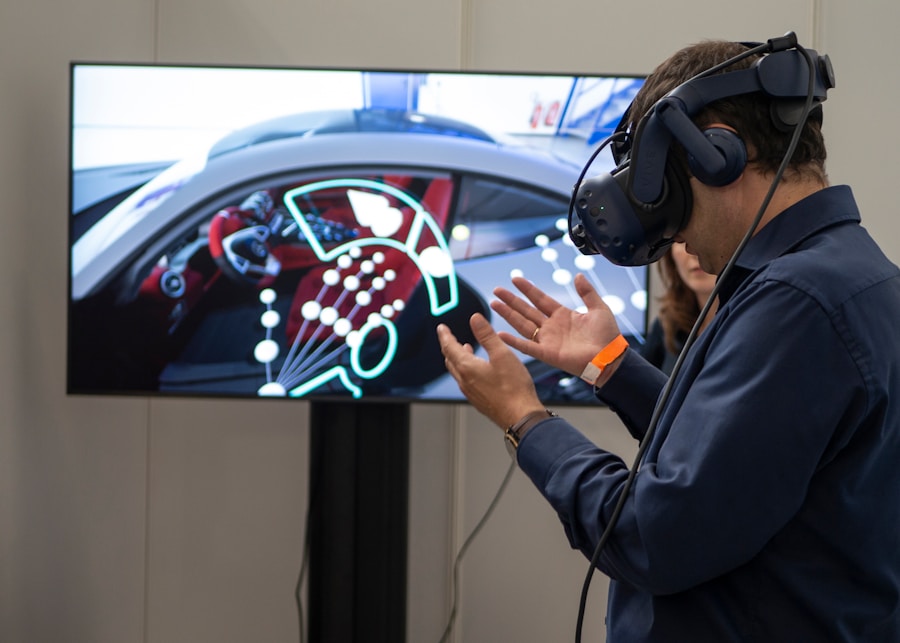From Streets to Screens: The Evolution of Digital Art Graffiti
Digital art graffiti, also known as street art, has its roots in the traditional form of graffiti that originated in the late 1960s and early 1970s in New York City. Graffiti artists would use spray paint to create elaborate and often politically charged murals on public spaces such as walls, buildings, and subway trains. However, with the advancement of technology, particularly the rise of digital platforms, graffiti artists began to explore new ways to create and share their art.
The birth of digital art graffiti can be traced back to the late 1990s when artists started using digital tools such as graphic design software and digital cameras to create and document their work. This allowed them to experiment with new techniques and styles, and to reach a wider audience through the internet. Digital art graffiti also opened up new possibilities for collaboration and networking among artists, as they could easily share their work with others around the world.
The Rise of Digital Platforms for Graffiti Artists
The rise of digital platforms has had a profound impact on the graffiti art movement. With the advent of social media and online communities, graffiti artists now have a global platform to showcase their work and connect with other artists and fans. Platforms such as Instagram, Facebook, and Twitter have become essential tools for graffiti artists to share their work, gain recognition, and build a following.
In addition to social media, there are also dedicated websites and online galleries that cater specifically to graffiti art. These platforms provide a space for artists to exhibit their work, sell their pieces, and connect with potential clients and collaborators. The rise of digital platforms has democratized the graffiti art world, allowing artists from all backgrounds and locations to gain visibility and recognition for their work.
The Impact of Technology on Graffiti Art
Technology has had a significant impact on the way graffiti art is created and experienced. With the advent of digital tools such as tablets, styluses, and graphic design software, artists are able to create intricate and detailed pieces with greater precision and efficiency. This has allowed for a greater level of experimentation and innovation within the graffiti art movement.
Furthermore, technology has also changed the way graffiti art is experienced by audiences. Augmented reality (AR) and virtual reality (VR) have opened up new possibilities for interactive and immersive experiences with graffiti art. Artists can now create digital murals that come to life when viewed through a smartphone or VR headset, blurring the lines between physical and digital art forms.
The Intersection of Street Art and Digital Media
The intersection of street art and digital media has given rise to new forms of artistic expression and collaboration. Graffiti artists are now incorporating digital elements into their work, such as projection mapping, LED lights, and interactive installations. These innovative approaches have transformed traditional graffiti into a multi-sensory experience that engages audiences in new and unexpected ways.
Furthermore, the integration of digital media has also led to collaborations between graffiti artists and technology companies, resulting in large-scale public art projects that push the boundaries of what is possible with digital art. These collaborations have not only elevated the status of graffiti art but have also brought attention to the potential of digital media as a tool for social change and community engagement.
The Evolution of Graffiti as a Digital Art Form
The evolution of graffiti as a digital art form has been marked by a shift towards more diverse and inclusive representation. Digital platforms have provided a space for artists from marginalized communities to share their stories and perspectives through their art. This has led to a greater diversity of styles, themes, and voices within the graffiti art movement.
Additionally, the evolution of graffiti as a digital art form has also led to new opportunities for artists to monetize their work. With the rise of NFTs (non-fungible tokens) and blockchain technology, graffiti artists can now sell their digital artwork as unique, collectible assets. This has opened up new revenue streams for artists and has challenged traditional notions of ownership and value within the art world.
The Role of Social Media in the Digital Graffiti Movement
Social media has played a crucial role in the growth and visibility of the digital graffiti movement. Platforms such as Instagram, TikTok, and Twitter have allowed artists to reach a global audience and connect with other creatives in ways that were previously impossible. Social media has also facilitated the organization of events, exhibitions, and collaborations within the graffiti art community.
Furthermore, social media has empowered graffiti artists to take control of their own narratives and build their personal brands. Through platforms like YouTube and Twitch, artists can share their creative process, engage with fans in real-time, and even monetize their content through sponsorships and merchandise sales. This level of direct engagement with audiences has transformed the way graffiti artists interact with their fans and has allowed for a more intimate and authentic connection.
The Future of Digital Art Graffiti
The future of digital art graffiti is filled with exciting possibilities and potential for growth. As technology continues to advance, we can expect to see even more innovative approaches to creating and experiencing graffiti art. Augmented reality, virtual reality, and other emerging technologies will likely play a significant role in shaping the future of graffiti as a digital art form.
Furthermore, the continued integration of digital media into public spaces will open up new opportunities for large-scale installations and interactive experiences. We can expect to see more collaborations between graffiti artists, technology companies, and urban planners that will transform our cities into dynamic canvases for artistic expression.
In conclusion, digital art graffiti represents a dynamic and evolving form of artistic expression that is deeply intertwined with technology and digital media. The rise of digital platforms has democratized the graffiti art world, providing artists with new opportunities for collaboration, visibility, and monetization. As technology continues to advance, we can expect to see even more innovative approaches to creating and experiencing graffiti art, shaping the future of this dynamic art form for years to come.







